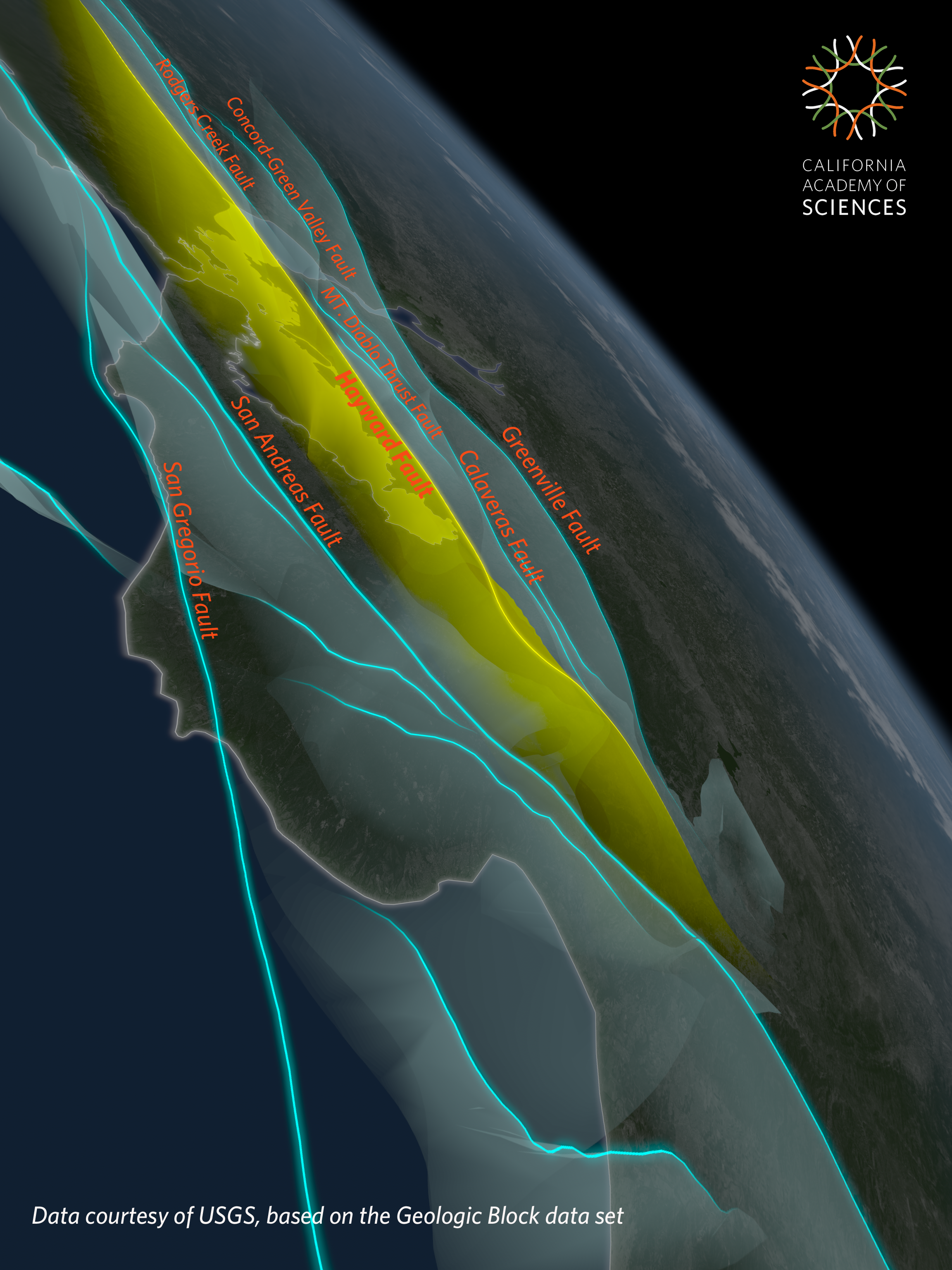Most earthquakes happen along plate boundaries. Many of these locations are also where mountain building or volcanic activity occurs. Certain areas, sometimes referred to as earthquake belts, are more prone to earthquakes. One belt runs northward through the western Pacific Ocean, across the Aleutian Islands, and then down the western coasts of North and South America. This belt includes the Bay Area faults and is called the “Ring of Fire.”

The City of San Francisco experienced major earthquakes in 1906 and 1989 due to its location along the San Andreas fault. However, of the major fault systems in the Bay Area, the Hayward Fault is of most concern to geologists. Extending almost 40 miles from Fremont to San Pablo Bay, the Hayward Fault runs under some of the most densely populated areas in the country. More than two million people live and work along the fault. BART, major gas lines, schools, and trauma centers sit on or near the fault. The Hayward Fault is a prime candidate in Northern California for a magnitude 7 earthquake within the next 30 years.
Geologists have observed cracks and deformed curbs on sidewalks and streets in areas near the fault. These are evidence of creep, a phenomenon of slow movement on the surface of the ground even though deep beneath the surface the rock is stuck in place. When the rock that’s stuck builds up enough tension, the fault then ruptures, or slips, causing a major earthquake. The last major earthquake on the Hayward Fault was in 1868—more than 140 years ago—and historically, major earthquakes have occurred along that fault about every 140 years.
This post is part of Exploring Earthquakes, a rich collection of resources co-presented by the California Academy of Sciences and KQED. This material is also available as a free iBooks textbook and iTunes U course.